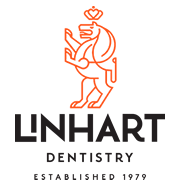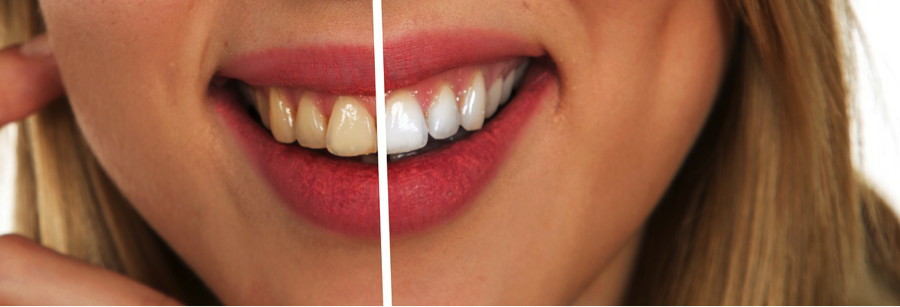
There are very few things as terrible as not being able to show off your smile because your teeth have been discolored.
Well, it’s said that if you know the causes of a problem you’re just on your way to solving it. Wanna know what’s causing your yellow teeth? And how to deal with the problem?
Here are six areas to pay attention to when evaluating what’s causing your yellowing teeth.
1. Your Genes
Every feature you can see on your physical body was inherited from your parents. Your blue or brown eyes, your round or curved nose and even your teeth.
You can inherit teeth colors like reddish gray and reddish brown from your parents.
When genes are involved, sometimes it is best to speak with a dentist to evaluate a proper teeth whitening solution can be recommended for you.
2. Exposure Of Your Dentin
The enamel is normally a thick layer that covers the underlying gray dentin part of the teeth.
This exposure is caused by enamel erosion that results from the acidic attack of your enamel by acidic foods and drinks.
Poor oral hygiene also causes this enamel erosion.
Limiting your intake of acidic foods and committing to a proper brushing and flossing routine helps remineralize the enamel, improving its thickness in the process.
3. Smoking And Excessive Coffee Intake
Your enamel has this ability to absorb pigments from the foods and drinks you take, and these pigments decolorize the enamel when they seep in.
Two major culprits are nicotine from smoking and caffeine from coffee. These pigments get into the enamel giving it a brownish coloration.
So now you know why most smokers have brown teeth.
4. Antibiotics
Your baby’s teeth are all formed in the womb. And there are reports that prove that tetracycline antibiotics stain teeth even while they’re developing in the gums.
If your mother took these antibiotics during the second trimester of her pregnancy or you took them before turning eight, then you may need some kind of bleaching treatment where chemicals like hydrogen peroxide are used to whiten your teeth beyond their natural color.
5. Fluorosis
Dental fluorosis is a common disorder that occurs when large amounts of fluoride are ingested during enamel formation. Fluorosis appears as little whitish, yellowish or brownish spots on the teeth.
Train your kids not to swallow toothpaste or mouth rinses after using them to clean their teeth. And if they’re on any fluoride supplement, ask your dentist so an overdose of the supplement isn’t ingested.
6. Accidents
A large amount of pressure directed on the teeth as in accidents can cause a crack in the enamel, exposing the interior dentin and sometimes serving as a sign of an internal bleeding that’s not been discovered.
If you’re pregnant, make sure you’re not brushing your mouth after vomiting while experiencing morning sickness. This is because the acid from the stomach makes up a large part of the vomit that bathes the enamel.
This acidic solution demineralizes and weakens the structure of the enamel, so brushing after vomiting makes it easier for the already weakened enamel to experience erosion.
Wrap Up
So there you have it – six reasons why your teeth may become discolored over time along with the best practices on how to prevent each scenario.

There is plenty of dental advice on the Internet. But most of it is nothing specific. It’s just the usual make sure you brush your teeth and I hope you use a dental floss.
But very few people ever remember to say when to brush your teeth and how to floss your teeth.
And these things do matter, especially if you’re on treatment for a particular condition.
So here are some common questions about brushing and flossing and answers you can use:
1. Why Even Brush My Teeth?
You may have been doing it every day for years now but have you ever wondered why everyone gets involved in this daily routine? Well, you may have done that, and I’m guessing you thought it was to get rid of the stale morning breath.
And you were right, but that’s just one of the reasons. There’s a lot going on in your mouth as the day progresses, and it gets covered with a substance called plaque.
It’s even worse if you’re on a diet high in sugars ’cause that just means it’ll form quickly on your teeth. Brushing removes most of this plaque but, when avoided, can increase tooth can decay resulting in gum disease.
All of these infections come with their own problems, sometimes bleeding is involved. This affects your smile and some oral infections have been associated with heart disease and diabetes.
2. Can Going Vegan Eliminate Brushing?
One major reason we need to brush at least twice a day is to deal with plaque buildup. Most dentists advise we stay away from sugary foods, especially snacks and sweets.
Yes, switching diets to a more vitamin-rich one can help nourish your teeth but the problem with this is that there are vegetables that are high in sugar and most carbohydrates are broken down to simple sugars so there’s really no practical way you can avoid sugar in your diet.
You’ll still find deposits of plaque on your teeth at the end of the day so it’s best to just choose a healthy diet and stick to the 2-2 brush rule. That is, brush your teeth twice a day and for two minutes each time.
3. Can I Brush More Than Two Times In A Day?
Yes you can, but you may want to reconsider that.
Overbrushing causes gum recession and you can also injure your gums in the process so it’s never a good idea.
Stick to brushing in the morning and evening and you’ll be fine.
4. Can My Child See The Dentist (And If Yes, When)?
Yes, your child can see the dentist. You can start when the first tooth comes in. Our complete permanent teeth set are available at birth, it just takes some time before we are able to see and touch them.
Your child can also undergo dental x-rays when they’re at least two years of age.
5. What Toothbrush Do I Use?
The toothbrush industry is a large one, there are manual, battery-powered toothbrushes and electric toothbrushes, there are also brushes with rubber handles and those with plastic handles.
And pressure sensors are also included in some brands, this is something you need if you’re not able to time yourself to avoid over-brushing.
Manual toothbrushes have almost no recurring costs. But their bristles get worn out faster than the rest and they can get broken.
Instead, consider the Nano-Silver Toothbrush which combines a unique combination of antibacterial, ultra-soft, multi-length bristles.
When you’re shopping for a toothbrush, and you should normally do this once in three months in line with ADA’s standard, you should also get a case where you can store your toothbrush after each use.
Leaving your toothbrush exposed in the bathroom or in your room may be the perfect invitation for bacteria to rest on their wet bristles.
6. What’s A Good Brushing Technique Like?
Let your toothbrush be at a 45° angle to your teeth and move your toothbrush in a circular motion around your teeth.
And back to the bristles, any toothbrush you get should have be soft bristled so you don’t hurt your gums or injure your tongue in the process.
Brush all the surfaces of your teeth and don’t forget your tongue while you’re at it.
Your brush head is another thing to look at for this technique to work. We all have different jaw sizes so you should use something that can fit conveniently into your jaw space and move around without any problems.
7. Why Even Floss?
Many dentists agree that brushing can’t get all the plaque off your teeth. There are still very little margins, pits and crevices that even the most sophisticated toothbrushes can’t get to.
So getting and using a dental floss is the only way to stay 99.9% plaque free. Flossing also prevents common dental infections like cavities and periodontitis.
8. How Many Times Should I Floss?
As many times as you brush your teeth. So I guess that’s twice. Flossing doesn’t take as much mental energy as brushing so there’s no reason to skip it, you can floss even while listening to music or watching television.
9. What’s The Best Toothpaste?
There’s really nothing like a toothpaste that works for everyone at all times because some conditions can make you react to the contents of a particular paste.
But a fluoridated toothpaste is a good start. Fluoride is a very important element that helps strengthen the teeth. It also fights enamel erosion that occurs when your teeth are being attacked by demineralizing acids.
And if you’re looking to get a toothpaste to whiten your teeth, there are many options for you but it’s important you consult your dentist before using any or opting for traditional remedies.
There are many questions people have about brushing and flossing, this post should have answered some of yours.
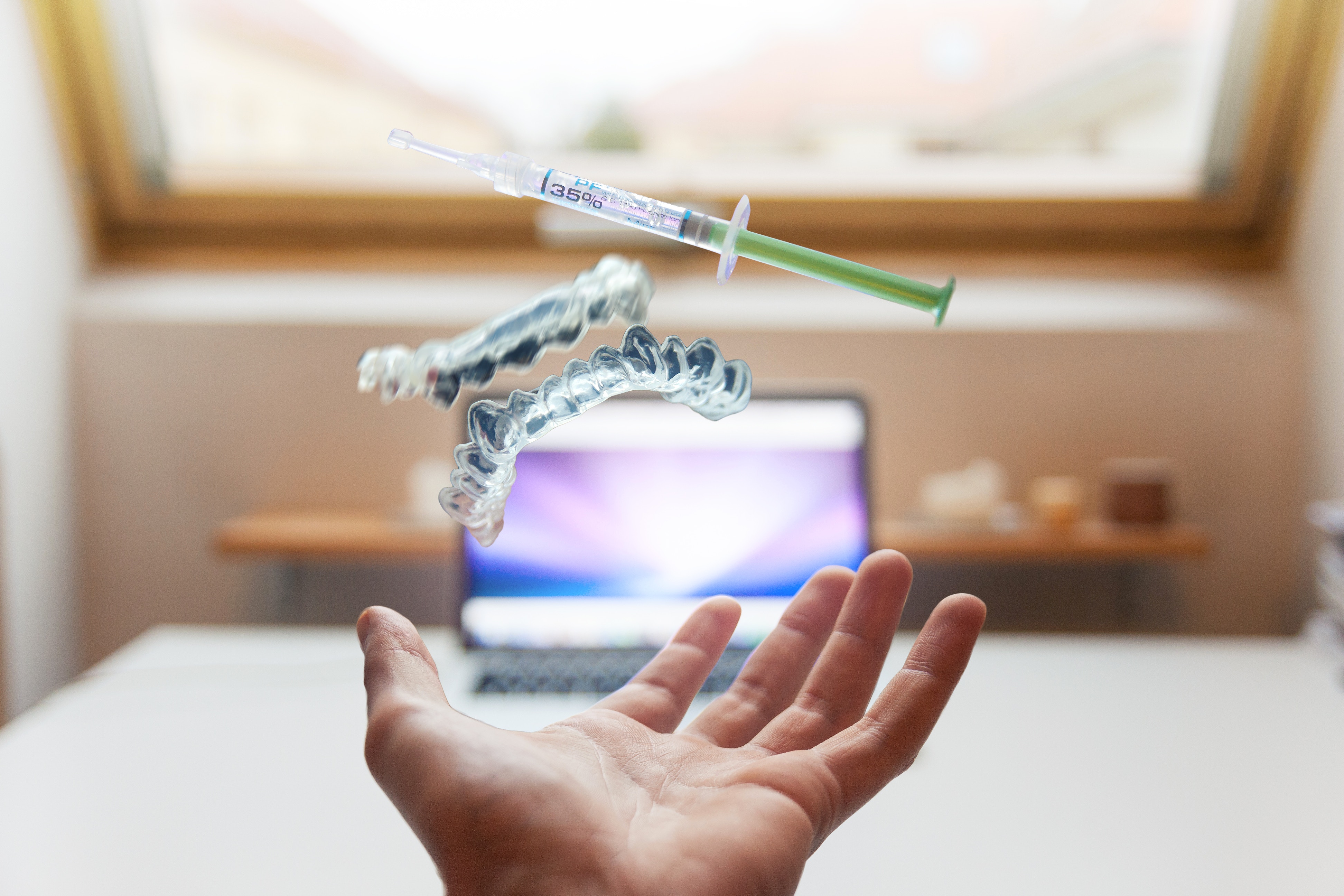
Poor dental care affects your overall health and well-being, so oral hygiene isn’t something you can ignore. If you’ve been doing things that are harmful to your teeth, you’ll likely end up with one (or more) dental infections.
But like every other periodontal disease, if it’s detected on time, you can see a dentist for proper treatment.
So you want to know more about these diseases? The signs to look for? How you can prevent them? Let’s jump in.
1. Oral Herpes
Oral herpes is caused by the herpes simplex virus, you may be familiar with the common names like cold sores or fever blisters. That’s because you’d likely see sores on your lips or gums if you’re infected.
Once the virus gets into your body, it’s there for life but that’s nothing to worry about ‘cause it’d be inactive.
You can get infected by sharing toothbrushes and dental floss with carriers and even kissing or any other form of skin contact.
You’d find it difficult eating if you’re infected but healing is usually complete in 14 days.
2. Gingivitis
Gingivitis is an inflammation of the gums and is another periodontal disease with bacterial roots. It usually affects people who’ve failed to adopt the right brushing and flossing routines. And it’s not too difficult to know why.
After every meal, plaque will begin to form on to your teeth. But that’s not the problem. It only gets dangerous when nothing is done to remove the plaque. And remember plaque is a mass of bacteria, so when it gets below the gum line, gingivitis sets in.
Some signs to look out for are swollen and bleeding gums and pain when chewing.
And the best treatment for it? The best way to prevent gingivitis? Obey the ADA’s 222 rule, brush and floss twice daily!
3. Periodontitis
Don’t treat gingivitis and you get periodontitis, it’s that simple. That’s because the infection spreads from the gums to the ligaments and bones that support the teeth making the teeth fall out. The periodontitis disease also increases the rate of bone destruction around the teeth.
The symptoms are very similar to gingivitis except for the loose teeth also experienced. Your dentist may require you undergo an x-ray to show the lost bones.
If the problem gets too bad, a tooth or more may have to be removed so the infection doesn’t spread to others.
And sticking to a good brushing and flossing routine helps with treatment also.
4. Herpangina
Another dental infection you should look out for is Herpangina, it’s a viral infection expressed by small, blister-like ulcers on the roof of the mouth and in the back of the throat.
It normally affects children so you can see why you can’t ignore your little one’s oral care.
Sore throat, loss of appetite and vomiting are some of the symptoms and the ulcers at the back of the mouth have a gray color.
You should seek dental care if a sore throat lasts for more than five days and common symptoms of dehydration like dry mouth and reduced urine output are expressed.
Herpangina is caused by the coxsackieviruses which are contagious so you should wash your hands if you come in contact with a carrier and encourage them to cover their mouths while coughing or sneezing.
5. Hand Foot and Mouth Disease
Let’s call it HFMD. It’s a viral infection that’s similar to herpangina and is of huge importance to all dental practitioners.
It’s also caused by a coxsackievirus and very contagious. The symptoms are similar to that of herpangina with red spots appearing on your child’s palms and the soles of their feet.
But it’s not something to worry about. Your child would normally recover anywhere between seven to ten days without medical treatment.
Practicing proper hygiene and avoiding close contact with carriers are some preventive measures to adopt.
6. Dental Caries
You can call it cavities or tooth decay, it’s the same thing. Dental caries is caused by bacteria that destroys the enamel and the dentin under it. These acids also attack the cementum layer of the tooth.
This happens when bacteria in plaque convert the sugars in your food to enamel-attacking acids. If this continues unchecked, holes would be seen on the tooth and they’d get larger over time.
Common symptoms are increased tooth sensitivity to hot or cold foods and drinks as the decay progresses.
Regular brushing (with a fluoridated toothpaste) and flossing help to remineralize the enamel, fighting the acid breakdown in the process.
And for treatment, you definitely need to see a dentist, especially for the late stages.
7. Pulpitis
When tooth decay gets to the pulp of the tooth, the bacteria causes an inflammation of the dental pulp and that’s pulpitis. As the pulp swells, it’s trapped by the dentin and this pressure causes a toothache. That’s why a common name for pulpitis is toothache.
The pulp cavity is a very sensitive area of the tooth, so if the dental infection to that area isn’t treated quickly, it dies. In such cases, usually called irreversible pulpitis, the dentist may need to drill into the pulp and remove the infected matter from the tooth.
In reversible pulpitis, a filling procedure can save the tooth.
Cutting down on sugary foods is one way to prevent pulpitis.
8. Canker Sores
Canker sores are painful ulcers or sores on the mouth, tongue, lips or throat. They could be caused by injury to the mouth, rough brushing techniques, dental braces, vitamin deficiencies or even spicy foods.
Some symptoms are bleeding gums and painful gums. It’s a viral infection that exhibits some symptoms of oral cancer so you should run a check to be sure.
Canker sores aren’t contagious so don’t confuse them with the contagious oral herpes.
They normally don’t require any treatment to heal but you should avoid spicy foods and vigorous brushing to ease the pain.
9. Oral Thrush
Oral thrush is a fungal dental infection that can affect the mouth, tongue and the gum. It’s usually seen in babies and causes bumps or rashes to form on the tongue.
Apart from the rashes, other symptoms are dry skin at the inner cheek and difficulty swallowing.
Infected babies can pass the fungus to their mothers during breastfeeding, so if you’re a nursing mother, it’s something to watch.
You should practice good oral hygiene to prevent oral thrush.
Anyone can get a dental infection. But when you know how to prevent and treat most of the common names, you’d understand what the dentist is doing and make the necessary lifestyle changes.
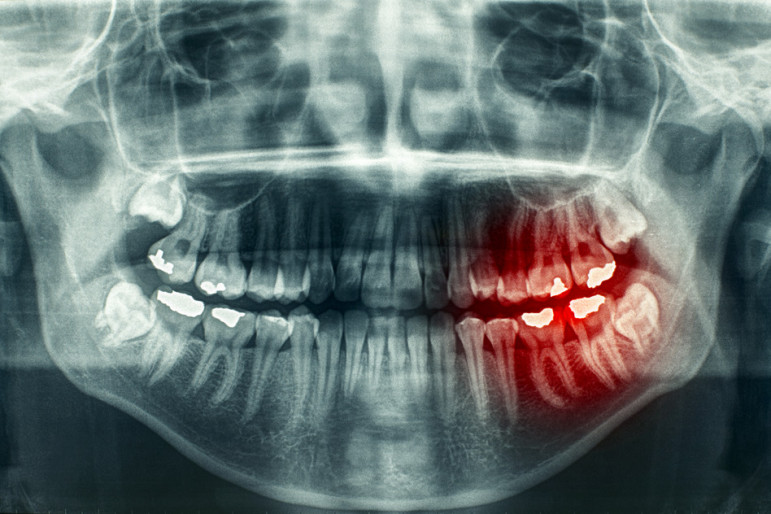
Do you think that missing the occasional dental checkup is no big deal? It may surprise you to know that every time your dentist takes a look at your mouth, he or she gets a glimpse of your level of overall health in addition to your oral health. In fact, dentists are often the first health professionals to spot certain medical conditions in their earliest stages. The following are just a few conditions that your dentist can discover during a routine checkup.
Diabetes, Heart Disease and Dementia
When previously healthy gum tissues suddenly begin to swell and bleed, your dentist sees this as a red flag for adult-onset diabetes. The high blood sugar levels, inflammation and impaired healing processes that are characteristic of diabetes make a patient more susceptible to infected gums. Patients with gum disease are also more likely to have heart disease and develop dementia, so the onset of this condition may prompt a visit to your physician.
Oral Cancer
You may not even realize everything your dentist is doing during a checkup, but one component of the examination is an oral cancer screening. Composed of a manual palpation of the soft tissues of the mouth, face and neck and a visual inspection of the oral cavity, an oral cancer screening can catch this disease in its infancy, which is a key factor in achieving a positive outcome.
Anemia
Marked by a low red blood cell count or low hemoglobin, anemia shows up in the oral cavity in several ways. As with many health conditions, anemia often raises a person’s risk for developing gum disease. When hemoglobin, which is the substance that gives red blood cells their dark color, is low, the soft tissues of the mouth may take on a pale color. Lastly, patients with anemia sometimes present with an inflamed tongue.
Stress
Several oral health conditions can let your dentist know you are under stress. Bruxism, which is an unconscious grinding of the teeth and clenching of the jaw, is often caused by stress. TMJ disorder, which affects the jaw joints and often causes head and jaw pain, is also a common product of stress. Canker sores or ulcers in the mouth are another clue that the patient needs to look at ways to reduce stress.
Eating Disorders
The eating disorders anorexia and bulimia are easy to spot upon examining the teeth. Both disorders prevent the body from receiving essential nutrients to keep the teeth strong and healthy, and they will present themselves with rampant dental erosion and tooth decay. Because bulimics induce vomiting on a regular basis, their teeth, especially the back surfaces, are more vulnerable to erosion from frequent contact with stomach acids.
The Importance of Regular Dental Checkups
Your oral health and general health are not mutually exclusive, so you must attend to both regularly by keeping your dental and medical checkup appointments. Not only will seeing a cosmetic dentist near you every six months ensure that your teeth and gums are in great shape, but it can also help detect some health problems early in their development and prompt you to seek the appropriate treatment from your physician.
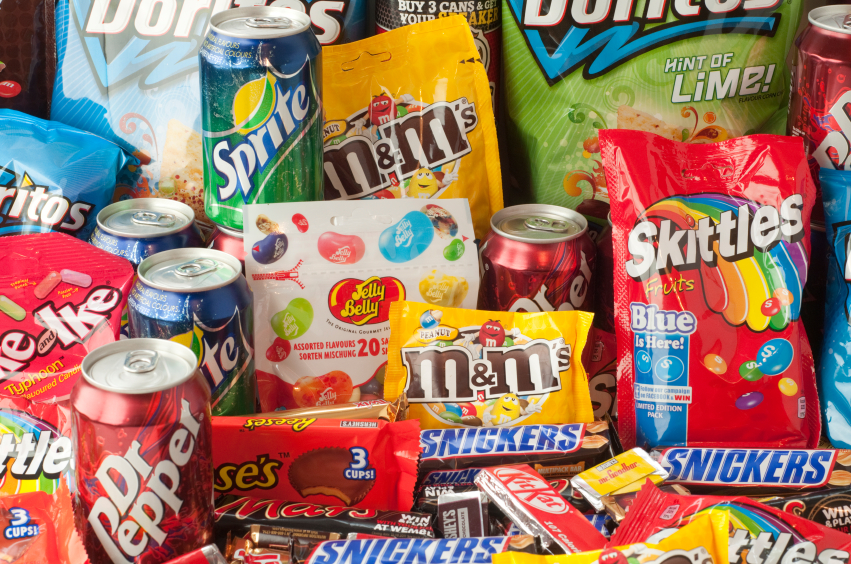
If you are worried about your dental hygiene, there is a good chance that you already devote a little time in your day to things like brushing, flossing and using mouthwash. While those three things are the cornerstone of great dental health, what you eat on a typical day can also have a big effect on the color, health and cleanliness of your teeth. Here are some of the worst foods for your teeth.
Dried Fruits
If you think that reaching for dried fruits like apricots or apples is a healthy choice, you’re not alone. While these snacks can be rich in vitamins and nutrients, they also have a lot of natural sugars. Unlike fresh fruit, however, dried fruits are sticky and hang around in your mouth longer than you would like. This sticky, sugary combination feeds bacteria and can even lead to dental erosion over time.
Sugary Sodas
With its combination of acid and sugar, soda is a lethal combination for the health of your teeth. Plus, the prolonged way that most people consume sodas makes it even worse. If you have a sip of a soda every few minutes, you are essentially washing your mouth with a sugary syrup over and over again for an hour or longer. If you choose to drink a soda, drink it all at once to reduce the time that your teeth are exposed to the beverage.
Hard Candies
Just like sodas, hard candies are so bad for your teeth because the sugar hangs around for a while. If you suck on a hard candy for 15 minutes, your teeth are exposed to the sugar for quite a while. If you chew it up, the odds are good that small, sticky pieces of the candy will stay on your teeth for even longer. Chewable candies and chocolates, even if they have the same amount of sugar, will almost always be better for your teeth than these hard counterparts.
Alcohol
There are plenty of medical benefits to enjoying a small glass of wine on occasion, but frequent alcohol consumption can bring with it problems for your teeth and mouth. Alcohol can corrode the gums, and those who consume alcohol in large amounts are more likely to have throat or mouth cancer. Since alcohol also slows saliva production, it can lead to bacteria particles building up in your mouth at a faster than normal rate.
Acidic Fruits
When you think of acidic fruits, it is citrus like oranges, tangerines, grapefruits, lemons and limes that probably come to mind. Add tomatoes to that list, and you have some of the most naturally acidic and sugary foods on the planet. Although these fruits have health benefits, they can eat away at your enamel and put you at a greater risk for cavities and tooth decay.
Although some of the foods on this list have health benefits, all can have negative effects on your teeth. You don’t have to skip them entirely, but make sure to brush or drink water after consuming things like soda, acidic fruits, alcohol, dried fruits and hard candies.
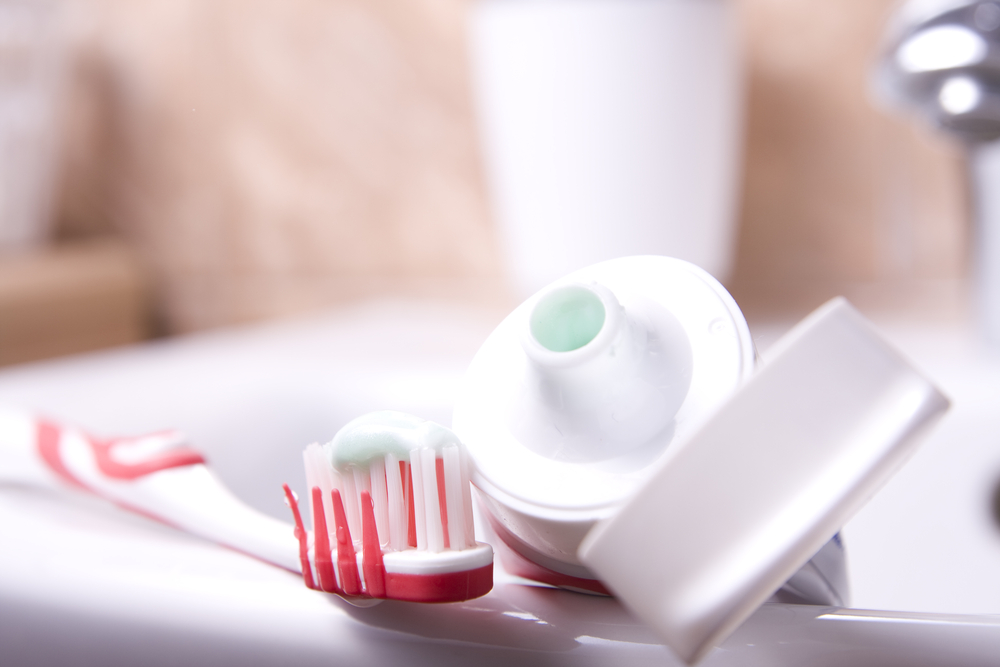
Gum disease is a chronic condition—once you’ve got it, you can manage the symptoms, but the damage to the structures that support your teeth cannot be reversed. That is why it is so important to be vigilant with preventive measures. Not only can this incurable condition lead to tooth loss, but it is also linked with several major health problems, including Alzheimer’s disease, high blood pressure, respiratory disease and diabetes. Fortunately, this condition, which is also called periodontal disease, is easy to prevent if you take proper oral care measures at home and see your dentist every six months for a checkup and thorough professional cleaning.
Best Practices for Oral Care at Home
The following five elements can help you take control of your periodontal health:
1. Flossing: You should floss at least once a day, gently sliding it against each tooth and under the gumline several times to ensure that the plaque is effectively removed.
2. Brushing: At least twice a day, brush all tooth surfaces, the gums and the tongue with a fluoride toothpaste.
3. Using Mouth Rinse: While brushing and flossing alone are usually enough to keep plaque under control, your dentist may recommend that you add an antiseptic or plaque-reducing mouth rinse to your cleaning routine.
4. Eating a Healthy Diet: A diet that is low in sugar and saturated fat and high in antioxidant-rich vegetables and fruits can support the immune system and keep gum tissues healthy.
5. Avoiding Tobacco Products: Over 60 percent of smokers develop gum disease. The harmful chemicals in cigarettes and smokeless tobacco products interfere with the functioning of gum tissue cells, decrease the flow of oxygen-rich blood to the gums and weaken the immune system.
Preventive Dental Visits
Seeing your dentist every six months is important for two reasons: prevention and early detection of oral health problems.
1. Teeth Cleaning: You love the look and feel of your teeth after the dental hygienist removes tartar and polishes the enamel, but there’s more at stake than aesthetics when you have your teeth cleaned. Removing plaque and tartar along the gumline helps prevent the inflammation and formation of pockets between the gums and teeth that are characteristic of gum disease.
2. Examination: Along with inspecting your teeth for decay and screening you for oral cancer, your dentist looks for signs of gum disease at each checkup. Because the earliest stage of gum disease can be reversed with proper treatment, you can’t afford to miss your routine dental appointments.
Signs of Periodontal Disease
The precursor to gum disease is gingivitis, which occurs when a buildup of plaque irritates the gums, causing inflammation and bleeding. If you notice tender, swollen or bleeding gums after you brush and floss, make an appointment with a dentist near you immediately. In most cases, gingivitis can be reversed by stepping up your oral hygiene routine at home and obtaining a deep cleaning of your teeth and gums at your dentist’s office. With proper treatment, gingivitis need not progress to full-blown gum disease.
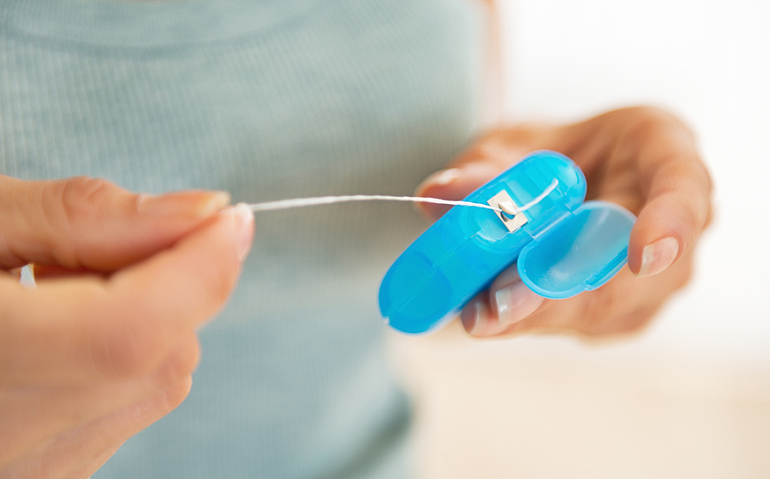
Every time you head to the dentist, you are probably reminded to brush your teeth and floss on a regular basis. Although most people consider brushing their teeth to be a non-negotiable part of their daily routine, far fewer individuals remember to make flossing a priority. Flossing can dislodge pieces of food stuck in your teeth, sure, but it does a lot more. Here are five of the surprising benefits of flossing your teeth on a daily basis.
1. Flossing Prevents Gingivitis
Gingivitis, an inflammation of the gums, can be a painful condition that includes symptoms like bleeding or swollen gums. One of the simplest ways to prevent gingivitis is by flossing regularly, which can remove the plaque buildup on the gum line that leads to the disease.
2. Flossing Helps Control Diabetes
Most people are shocked to hear that diabetes and flossing are related in any way at all. Yet, flossing can have a major positive impact on diabetes in both children and adults. When you don’t floss, bacteria in your mouth builds up at a fast rate. This oral bacteria can affect the glucose levels of your blood, which is a major problem if you have diabetes. To help stabilize blood glucose levels, make sure to floss at least once each day and remove as much bacteria from the mouth as possible.
3. Flossing Reduces Bad Breath
If you have bad breath, you might have already tried some of the common tricks to get rid of it. Brushing your teeth two or three times a day and using mouthwash can certainly help, but it is the buildup of tartar that causes the strongest smells. You can remove the tartar on your teeth by brushing, but flossing can help remove tartar from your gums and in between your teeth. Those with bad breath who begin flossing regularly typically note improvements in their breath within a week.
4. Flossing Reduces the Risk of Respiratory Disease
Your mouth is a direct channel to the organs of your body. While this is a good thing in terms of food making it to your digestive system, it can be a problem when bacteria from the mouth travels down your throat to the respiratory system. Flossing can eliminate some of the oral bacteria that causes bronchitis and even pneumonia.
5. Flossing Can Prevent Heart Disease
Without regular flossing, you might notice that your gums bleed, which is a sign of gingivitis. One of the problems associated with this is that it allows bacteria to enter your bloodstream and attack your organs. Eventually, this can result in heart disease or blood clots. To significantly reduce the risk of heart disease, especially in men, daily flossing is a simple but effective solution.
Flossing can be a handy way to get rid of food stuck between your teeth, but the benefits don’t stop there. Regular flossing can play a role in reducing heart disease, respiratory ailments, bad breath, diabetes regulation and even gingivitis. With so many positive benefits, everyone should make a habit of flossing daily.
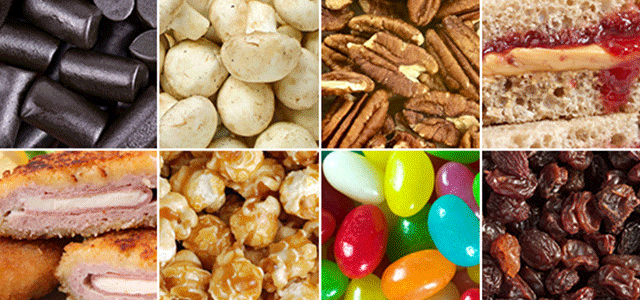
Even if you’re careful to eat foods that are good for your overall health, you could still be doing damage to your teeth. Certain foods and beverages, especially those that are particularly sweet or sticky, have the potential to cause cavities and even damage the enamel on your teeth. However, even some healthy food items can be bad for your dental health. Here are the most surprising food and drink culprits that you should do your best to avoid.
Dried Fruit
Although dried fruit can contain lots of vitamins and minerals, it is not a smart food choice for your oral health. Since most dried fruits are incredibly high in sugar as well as very sticky, they get stuck between your teeth until the next time that you floss. This constant stream of sugar feeds bacteria in the mouth and can lead to bad breath as well as cavities. If you enjoy eating dried fruit, be sure to brush and floss immediately after eating.
Pickles
Since pickles are low in both calories and sugar, they might seem like a naturally healthy snack to enjoy at any time of the day. Unfortunately, however, pickles contain large amounts of vinegar. Eating pickles on a regular basis can contribute to the erosion of your enamel, which leads to staining and tooth discoloration.
Red Wine
It is not at all uncommon to read about the heart-healthy benefits of red wine, but there are also some dental drawbacks that might surprise you. The tannins that cause red wine to taste dry also reduce saliva production, which can be bad for dental health. Plus, those same tannins soften tooth enamel and can lead to stains.
Sports Drinks
After a hot day outside or an hour of physical activity, you might reach for a re-hydrating sports drink rather than a soda. What you might not realize is that many sports drinks are packed with sugar, which can be just as bad for your teeth as a cola. If you enjoy sports drinks, just make sure that you drink them all at once. The worst thing to do is slowly sip the drink over several hours, which gives bacteria a steady stream of sugar.
Any local dentist in your area would tell you to avoid sugary and sticky foods. However, these surprising dental culprits should also be avoided whenever possible.
Yes, flossing is an essential part of proper daily oral hygiene. Although studies have not necessarily shown flossing to decrease cavities, it has been shown to help prevent periodontal disease!
Gingivitis is the initial presentation of periodontal infection, and signs of gingivitis include bleeding gums, inflamed gums, and red gums. Gingivitis is easily reversible by proper brushing techniques and flossing daily. After a week of good home care, all signs of gingivitis will disappear.
Periodontal disease, on the other hand, is a more severe infection of the gums and can lead to bone loss around teeth. This bone loss can result in the loss of teeth! Although periodontal disease can be diagnosed ewrly and halted, its destruction cannot be reversed. The best way to prevent periodontal disease is by visiting your dentist regularly, brushing twice a day, and flossing daily.
So YES, you should floss….but only if you want to keep your teeth!
As described in previous posts, there are many reasons why a person may get cavities, ranging from dry mouth to sugar intake. Below is a list of, in my opinion, 5 of the best ways to keep your teeth healthy and strong:
1. Brush Regularly with Fluoride Toothpaste
Brushing keeps your teeth clean of bacteria. Fluoride helps to strengthen the enamel, as well as stopping bacteria from producing their decay forming acid. We recommend PearlinBrite Mint Fluoride Toothpaste with Aloe Vera.
2. Visit your Dentist Regularly
One of the best ways to catch cavities early and get them fixed, as well as keep your teeth free of plaque and calculus, is to visit your dentist. Six months is the normal recall, but if you are at high risk for cavities, four or even three month recalls are preferable.
3. Reduce Fermentable Carbohydrates
Reduce your intake of fermentable carbohydrates which includes anything with added sugar, and foods that stick in your mouth. For example raisins are one of the worst foods in terms of causing cavities because they stick in your mouth for a long time.
4. Rinse with Water After Eating
When eating foods that do contain fermentable sugars, make sure to rinse with water soon after. You don’t want to let the sugar sit on your teeth. This is why children who sleep with there bottles in their mouths develop such bad cavities, the sugars sit on their teeth all night!
5. Drink Fluoridated Water
Yes, I know all the Internet lies that claim it is dangerous. As a doctor to be, I can tell you there are mountains of scientific evidence showing the benefits of fluoride, and little to no scientific evidence showing any dangers when administered properly. So stop living off bottled water and drink that good old fluoridated tap water to keep your teeth strong and healthy.
